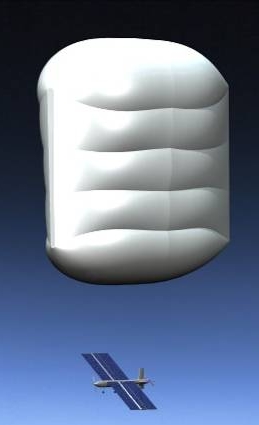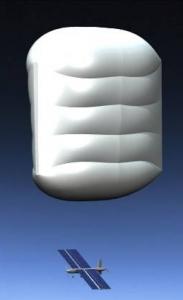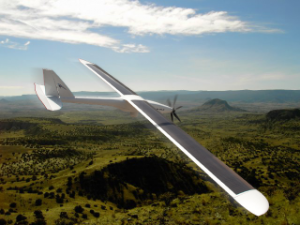U.S. Navy awarded a research contract to Global Near Space Services ("GNSS") to develop a two stage lighter than air ("LTA") unmanned air vehicle ("UAV"). The GNSS program developed a clean, cost-effective satellite-type capability utilizing a high altitude upper-stage shaped LTA coupled with an unpiloted detachable, flying, lower stage UAV containing sensor systems. GNSS subcontracted to Bye Aerospace to design the solar-electric flyable lower stage, 'stratospheric recovery vehicle' or SRV detachable UAV.

The unique GNSS "StarLight" LTA system is predicted to persist on station against prevailing winds at very high altitudes for 4 months for a fraction of the cost of a satellite. Solar electric energy provides the necessary power for all systems including both motors for station keeping and customer surveillance payloads.
The lower stage solar electric UAV features deployable thin film photo voltaic arrays that articulate up to +/- 50 degrees to optimize solar energy collection. The electric motor propeller system also articulates up to +/-30 degrees to provide enhanced steering for the LTA against altering wind conditions at altitude. The lower stage detaches on command and returns under powered flight to landing and for refurbishment and re-launch as required.
Bye Aerospace helped design and construct a 40% demonstration scale SRV (pictured) for GNSS and the U.S. Navy. The scaled SRV demonstrator vehicle is designed with advanced all-composite structure, has a length is 27.8 feet with a wing span of 25.6 feet, and gross weight of 854 lbs. It is designed to 5g strength and a 1.4 safety factor. The SRV test vehicle utilizes a partial array of thin film photo voltaics to provide solar energy collection. Light-weight Li-Ion batteries provide energy storage. The SRV demonstrator is designed to fly with a limited redundancy autopilot, initially to altitudes under 15,000 feet, and eventually to near operational altitudes of up to 65,000 feet. Test payload for the demonstrator up to 50 lb and 100 Watts of power.
Potential government applications include homeland security and related air sovereignty support. Potential civil roles include surveillance, communications and air traffic management. For more information go to www.GlobalNearSpace.com









